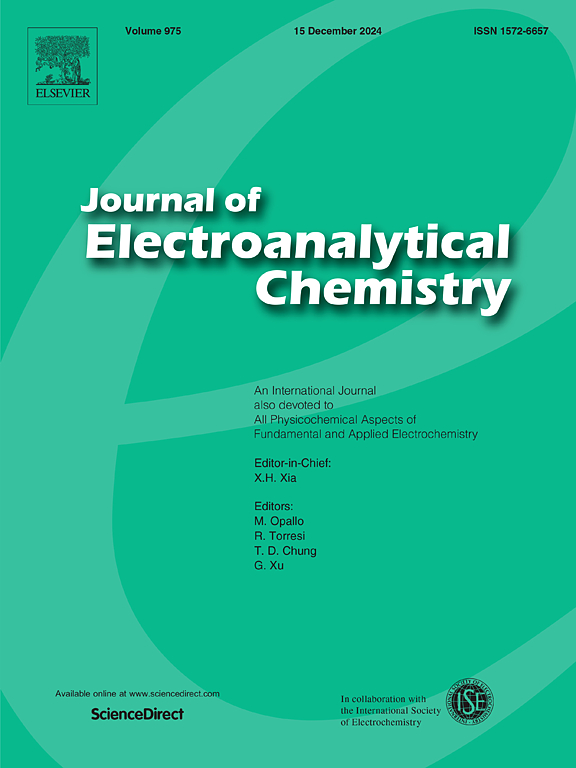Electrochemical evaluation of the real surface area of copper-zinc alloys
IF 4.1
3区 化学
Q1 CHEMISTRY, ANALYTICAL
引用次数: 0
Abstract
Accurate measurements of real surface area (RSA) are essential in fundamental electrocatalysis for evaluating the intrinsic activity of various materials. However, existing electrochemical methods for determining RSA values in metallic alloys, particularly those containing active metals, remain underexplored. This study critically assesses the efficacy of capacitance measurement techniques for calculating RSA values in copper-zinc alloys, which are commonly employed as electrocatalysts for CO2 reduction. We investigate optimal conditions for estimating RSA through cyclic voltammetry, focusing on electrolyte selection and appropriate potential ranges to ensure reliable RSA assessments. Additionally, we emphasize the necessity of using suitable reference samples for accurate specific capacitance calculations. Our findings reveal that potential uncertainties arising from the use of inappropriate reference samples across different Cu-Zn compositions can reach an order of magnitude, rendering them unsuitable for electrocatalytic studies. This research highlights the need for robust surface area quantification techniques to reduce uncertainties in reporting the activities of alloy-based materials in various electrochemical applications.
铜锌合金实际表面积的电化学评估
实际表面积(RSA)的精确测量对于基础电催化评估各种材料的内在活性至关重要。然而,用于确定金属合金(尤其是含有活性金属的合金)实际表面积值的现有电化学方法仍未得到充分探索。本研究严格评估了计算铜锌合金中 RSA 值的电容测量技术的有效性,铜锌合金通常被用作二氧化碳还原的电催化剂。我们研究了通过循环伏安法估算 RSA 的最佳条件,重点是电解质的选择和适当的电位范围,以确保可靠的 RSA 评估。此外,我们还强调了使用合适的参考样品进行准确的比电容计算的必要性。我们的研究结果表明,在不同的铜锌成分中使用不合适的参考样品所产生的潜在不确定性可达一个数量级,因此不适合用于电催化研究。这项研究突出表明,在报告合金材料在各种电化学应用中的活性时,需要采用可靠的表面积量化技术来减少不确定性。
本文章由计算机程序翻译,如有差异,请以英文原文为准。
求助全文
约1分钟内获得全文
求助全文
来源期刊
CiteScore
7.80
自引率
6.70%
发文量
912
审稿时长
2.4 months
期刊介绍:
The Journal of Electroanalytical Chemistry is the foremost international journal devoted to the interdisciplinary subject of electrochemistry in all its aspects, theoretical as well as applied.
Electrochemistry is a wide ranging area that is in a state of continuous evolution. Rather than compiling a long list of topics covered by the Journal, the editors would like to draw particular attention to the key issues of novelty, topicality and quality. Papers should present new and interesting electrochemical science in a way that is accessible to the reader. The presentation and discussion should be at a level that is consistent with the international status of the Journal. Reports describing the application of well-established techniques to problems that are essentially technical will not be accepted. Similarly, papers that report observations but fail to provide adequate interpretation will be rejected by the Editors. Papers dealing with technical electrochemistry should be submitted to other specialist journals unless the authors can show that their work provides substantially new insights into electrochemical processes.

 求助内容:
求助内容: 应助结果提醒方式:
应助结果提醒方式:


